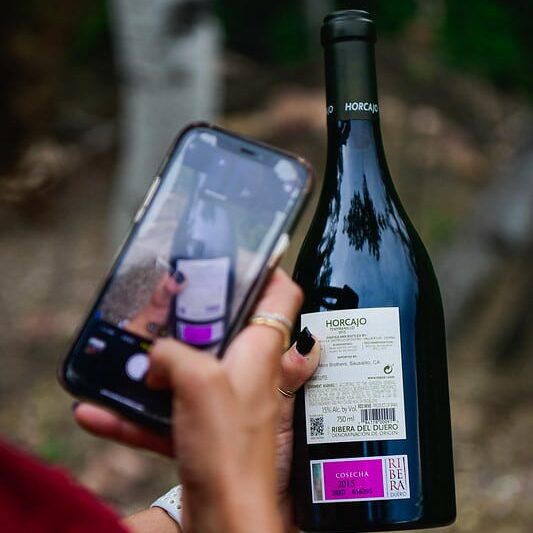A Revolution Plated: The Chefs Who Shaped Modern Spain
From the Basque kitchens to global five-star restaurants, a few visionaries have consistently raised Spain’s gastronomic flag worldwide.
Ferran Adrià, the father of molecular gastronomy, shook the culinary world at El Bulli. But beyond spherified olives and foams was a reverence for Spanish terroir. Tempranillo’s structured grace and Verdejo’s aromatic lift were part of the experience, grounding innovation in tradition.
Martín Berasategui, Spain’s most Michelin-decorated chef, integrates wines like Tempranillo into dishes that are rooted in Basque heritage but presented with modern precision. His wine pairings, often favoring Rueda’s Verdejo, bring crisp contrast to seafood-forward tasting menus.
José Andrés, both culinary icon and humanitarian force, continues to champion Verdejo in his restaurants and philanthropic projects. His creative menus across the U.S. are sprinkled with nods to Spain, from open-faced empanadas to aioli-drenched tapas, all paired effortlessly with expressive wines.
Chefs like Carme Ruscalleda, Dani García, and Ángel León have also played pivotal roles, showcasing Verdejo alongside sea-foraged cuisine or presenting Tempranillo with bold Andalusian flavors. Their work not only elevates Spain’s culinary credibility but reaffirms the wine-food link that defines Spanish hospitality.
Tempranillo: The Flavor Backbone of Spain
Tempranillo, often dubbed “Spain’s noble grape,” is synonymous with the soul of Spanish red wine. From Rioja to Ribera del Duero, this grape delivers a spectrum of expressions: from youthful cherry and red plum to aged nuances of tobacco, leather, and cedar.
The grape’s early-ripening nature (its name derived from “temprano,” or early) makes it a delicate cultivar to grow. Yet in the hands of experienced vintners in Ribera del Duero, it becomes liquid art: structured, intense, age-worthy, and ideal with robust dishes like lechazo (roast suckling lamb) or morcilla de Burgos.
A key discussion in recent decades has revolved around oak aging. Traditionalists favored American oak, which imparted distinctive vanilla and cedar notes, while modern winemakers began experimenting with French oak or stainless steel to let the fruit shine. The result? A dynamic, stylistic spectrum for sommeliers and chefs to explore and pair accordingly.
Verdejo: Rueda’s Aromatic Jewel
Verdejo, once a regional white destined for oxidation, is now Spain’s flagship white wine grape thanks to innovation in Rueda during the 1970s. Pioneers like Marqués de Riscal introduced cold fermentation and stainless steel to preserve the grape’s floral, citrus-driven profile—and the world took notice.
Today, Verdejo is celebrated for its bright acidity, subtle bitterness, and herbal complexity. At its best, it evokes Sancerre-level elegance, making it a favorite for pairing with seafood tapas, paellas, and even grilled vegetables.
The grape thrives in Rueda’s high-altitude vineyards, where diurnal temperature swings build acidity and aromatic intensity. Pair Verdejo with Galician octopus, fried anchovies, or Manchego cheese, and you unlock the grape’s full gastronomic range.
The New Wave: U.S. Chefs with Iberian Hearts
Spain’s culinary legacy is not confined by its borders. A new wave of American chefs and restaurateurs have embraced Tempranillo and Verdejo as cornerstones of Spanish cuisine abroad.
José Andrés (again), with restaurants from D.C. to Vegas, continues to place these varietals front and center, introducing U.S. audiences to their gastronomic potential.
Katie Button, of Cúrate in Asheville, North Carolina, draws on her time in Spain to offer a menu steeped in authenticity. Her pairings highlight how Verdejo’s acidity elevates cured anchovies, while Tempranillo complements jamón ibérico with finesse.
Mark Vidal of Boqueria brings Catalan tapas to major cities, with a wine list anchored in Spain’s viticultural bedrock. Verdejo by the glass. Tempranillo with braised short ribs. It’s a masterclass in accessibility and authenticity.
Kevin Fink of Kalimoxto in Austin blends Texan flair with Iberian soul. His menus show how Tempranillo can handle brisket, and Verdejo can refresh the palate after a fiery dish—culinary diplomacy at its finest.
Back to the Roots: Why Origin Still Matters
All roads lead back to the vineyard.
Tempranillo finds its spiritual home in Ribera del Duero, a region of limestone-rich soils, hot summers, and cold winters—ideal for growing grapes with concentration and structure. These wines carry the story of the land: bold, layered, and textured.
Verdejo, meanwhile, is inextricably tied to Rueda. Here, sandy soils and cool nights foster crisp, aromatic whites that speak of place and precision. Family-owned bodegas and century-old traditions continue to define winemaking.
Winemaking is culture. Terroir is identity.
When we serve a glass of Tempranillo or Verdejo, we’re not just serving wine. We’re offering our guests a portal to Spain—to its soil, climate, cuisine, and history.
The Case for Support: Why These Varietals Belong on Every Wine List
Yes, Spain offers Cava, Albariño, Garnacha, and even the rising star Godello. But when it comes to gastronomic breadth, historical prestige, and market share, Tempranillo and Verdejo lead the pack.
Tempranillo holds nearly 22% of all vineyard acreage in Spain. Verdejo, Spain’s top-selling white, dominates by-the-glass programs from Barcelona to Brooklyn.
While Godello, Mencía, and others offer intrigue and elegance, they represent niche experiences. Tempranillo and Verdejo, by contrast, are workhorses and flag-bearers. When thoughtfully poured, they set the tone for elevated, authentic hospitality.
Hospitality professionals: honor the Spanish guest at your table. Curate a list that represents not only regional precision but also the national identity of Spain. Tempranillo is more than a pairing for lamb—it is Spain in a glass. Verdejo is more than citrus and acid—it is a palate cleanser for the soul.
Conclusion: Old World, New Palate
In an age where global palates are shifting toward authenticity, simplicity, and rooted experiences, Spain’s culinary and wine traditions stand more relevant than ever.
Tempranillo and Verdejo aren’t just grapes. They’re gastronomic storytellers. With the guidance of chefs past and present—from Adrià to Andrés, Button to Berasategui—they continue to evolve.
So the next time you’re curating a wine list, building a menu, or planning a pairing—remember the roots. Because in the glass, just like on the plate, Spain is always serving something legendary.
